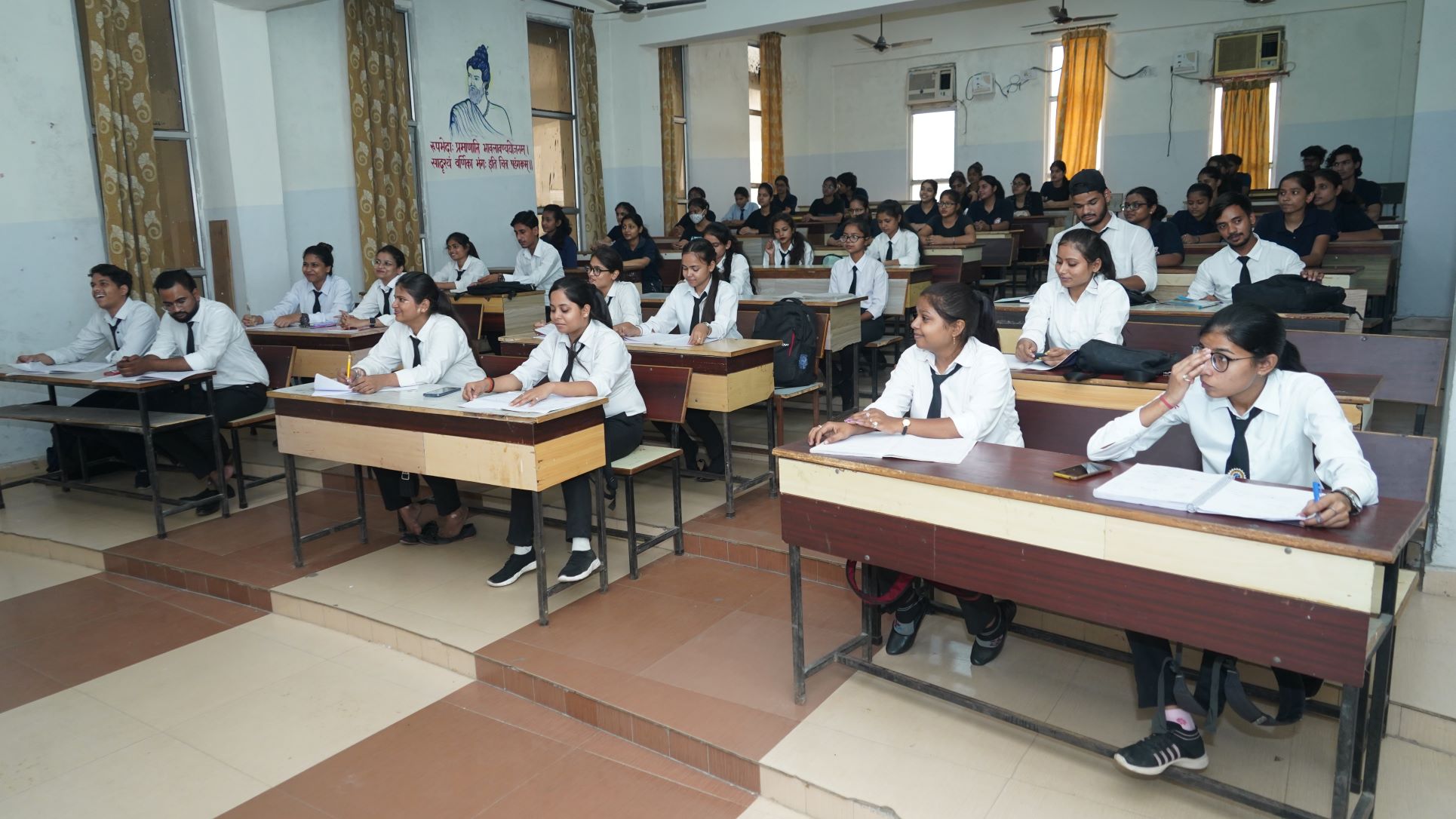Before every semester’s commencement, every student’s Mentor Card is updated by the previous mentors on their performance like examination marks and attendance in previous semesters. The mentor card students are shared with the new mentor. The student list showing previous performance is also shared with faculty members who are going to take their classes in the ensuing semester.
Identification of Weak/ Bright Students
The weak/bright students are identified by the respective Mentor based on the following considerations:
-
- Student’s regularity in class (Attendance)
- Performance in internal sessional examinations,
- After each internal examination, the performance record of the students is prepared by the respective Mentor on their respective Mentor Card. The students are segregated into three categories – Week, Medium and Bright Student.
- Every class is also assigned a class coordinator who along with the mentor of the student frequently reviews the performance of students based on the above categories.
- At the end of each internal Sessional examination, a meeting is held where all concerned mentors, subject teachers, class coordinators and HOD coordinators are present. The main discussion during this meeting is on identifying common weak and bright students and deciding the action plan for improvements.
- Mentors also communicate with the parents, of their Mentees if required.

Assisting Week Students

- After the First Sessional internal examination, Weak students are counselled by their Mentors. The counselling meeting with teachers of week subjects is also arranged byMentors. Even HOD assists in counselling the student if required in some cases.
- Special attention is given to these students and Mentors interact with their parents also if required.
- Subject faculty members provide the handouts or study material as well as extra assignments for practice to these students.
- After the second Sessional internal examination, if there is no improvement in identified students, remedial classes are arranged for those subjects in which students are lacking. Remedial classes may be scheduled in the evening or in the daytime by arranging some slots on a timetable.
- Mentors monitor the attendance, and syllabus progress of the remedial classes and an analysis report is sent to HOD for further suggestions of improvement if required for assisting week students.
- The HOD submits the complete analysis report to Director for further action.
Encouraging Bright Students
- Bright students are encouraged to solve complex engineering problems.
- Bright students of IInd & IIIrd year are associated with final year students to have a understanding of real world projects development.
- Faculties motivate bright students to go through technical journals; magazines etc. and write research paper of their own.
- Faculty motivates bright students to take part in various quizzes and coding competition at State and National level.
- The Innovation cell of institute chooses some bright students to take part in activities under its banner.

Quality of Classroom Teaching
The following pioneering teaching methods are adopted by the faculty members in the class to improve teaching:
- Course files are prepared by faculty before the commencement of the semester in which lecture plan, lecture delivery schedule, assignments plan, various assignments/quizzes/tests with solutions/answer keys, previous year question papers etc are the main ingredients. The lecture plan, evaluation scheme, COs etc are shared with the students by respective faculty members so that students may schedule their activities accordingly.
- The first lecture of the semester commences with an introductory class in which faculty members stress classroom management, general discipline and dress code etiquette. Faculty introduce themselves and interact with students. Course Objectives, Course Outcomes, Evaluation Scheme, Syllabus and importance of the concerned subject in Industry and likely career avenues are discussed.

- Every lecture starts with the discussion on the previous day’s discussion and doubts are clarified. This makes students more attentive to what the faculty are teaching in the class.
- Faculty members randomly review the notebooks of students. The art of note-taking and summarizing empowers the student to perform better and also enhances the classroom teaching experience.
- Faculty members manage the classroom rather than just teaching a class. They organize the classroom, manage the curriculum and keep students on task with various management techniques.
- Students are taught critical thinking skills rather than just teaching them to memorize facts hence students improve in other areas as well.
- The faculties members make the students understand the concept/principles/theory/problems in the classroom, keeping in view various cognitive levels of learning. This enriches the quality of teaching and leads students towards fast learning in the classroom environment.
- Faculty members use active learning in the class so that students can understand, learn and remember the complex concepts of engineering at ease.
- Students are also involved in cooperative learning which involves students working in a team to accomplish the assigned tasks.
- Assessment and evaluation of teaching quality are done by the head of the department as well as the director of the institute. HoD takes students’ feedback at different intervals of time and accordingly plans the actions to improve the teaching-learning process. The director on the other hand takes feedback from the students at the end of each semester.
Conduct of Experiments
- The number of experiments Performed: Laboratory forms the core of the curriculum along with theory coverage. The weightage to the labs is well balanced with theory. For all important subjects, there is a corresponding lab. University specifies 8 to 12 experiments out of which at least 08 experiments are to be performed. In our department, experiments are completed in 20 lab hours for each subject.
- Lab Delivery Schedule: The department has a lab in charge for every lab and a lab assistant who works in close association with the lab in charge. As a practice, the lab in charge is responsible for all the operations, conduction of practicals, maintenance and day-to-day related activities of the lab. During the commencement of the semester, after the lab courses are assigned to various faculty members, the lab in charge along with the assigned faculty members performs all practicals to ensure the proper working of all the systems and prepares the lab delivery schedule for the respective labs. The lab delivery schedule is worked out in accordance with the academic calendar and the course requirements.
- Groups Formation: Since we have an intake of 120, so two sections, A & B, (60 students each section) are formed each year which are further split into two sub-sections (A1, A2 likewise B1 & B2) for labs. In general, there are around 30 students in each sub-section and one faculty member is assigned to conduct of lab along with the lab assistant. Each student performs the experiment individually.
- Conduct of Experiments: Faculty details the experiments to students and helps students in conducting the same. Student performs the experiment on their own and they are required to make programs on various logic. As per requirements of the subjects, students may need to write a program and implement it to get results.
Continuous Assessment in the Laboratory
Evaluation of Lab Work: Once the practical is over, the student takes the screenshots of their outputs and endorsed them in the practical file which is checked by the faculty member on the same date or on the next turn. The various parameters on which the student’s lab work is evaluated are:
- Pre-Lab writing work
- Implementation & Active Participation
- Lab Record (Output)
- In time Submission
The evaluation of each practical performed is marked in lab performance records.
Marks Assessment:
As per the evaluation scheme provided by University, marks are allotted for each lab consisting of Internal as well as External practical marks.
- Internal Marks Assessment: The internal marks are provided as per continuous assessment on the basis of:
- Performance and conduct during practical o Internal viva-voce
- Attendance during practical
- External Marks Assessment: The external practical examination schedule is provided by the University and an external faculty expert, as decided by the University comes for evaluating the students for their lab work. The viva voce is conducted and the external practical marks are evaluated as per the student’s performance in presence of an external expert.
